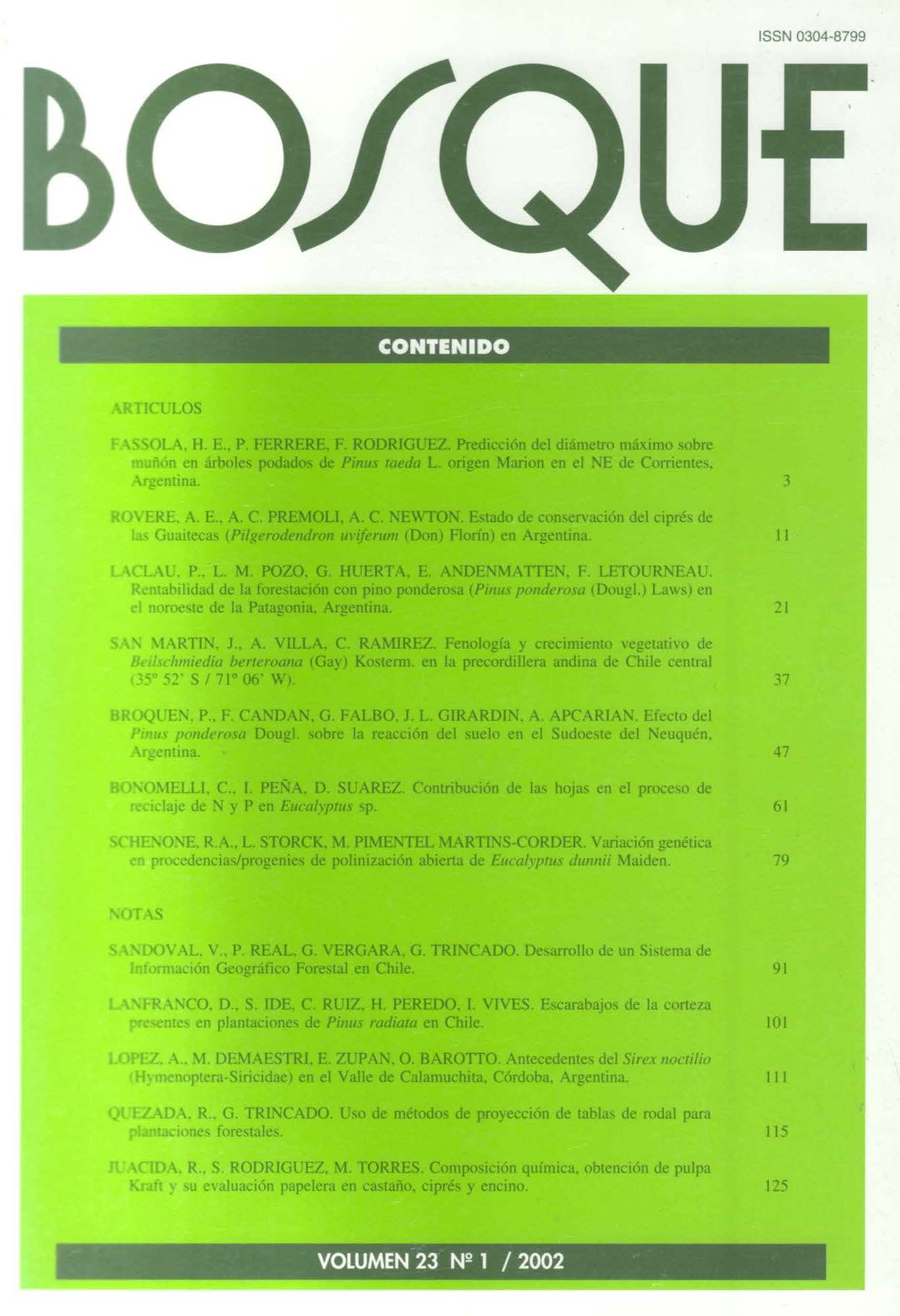Profitability of afforestation with ponderosa pine (Pinus ponderosa (Dougl.) Laws) in northwestern Patagonia, Argentina
Main Article Content
Abstract
Conifer afforestation in the northwestern Patagonian provinces of Neuquén, Río Negro and Chubut has increased over the last few years, largely owing to federal and state government promotional policies. However, there is not enough information available on the profitability of this investment to support private or social decisions. In this study, we calculated and analyzed the expected benefits for ponderosa pine (Pinus ponderosa (Dougl.) Laws) plantations under different production models, which were structured as operation and cash flows using regional growth models. The models considered are based on preliminary growth prediction functions for the species in this region. By means of computer spreadsheets, we analyzed 12 economic models that combine three site qualities and four management systems, using primary and secondary information on costs, prices and products. Results indicate that the models have a positive internal rate of return (IRR), although not all of them have a positive soil expected value (SEV) at a discount level of 7% annual rate. Among all the economically viable models, the intensive-very apt site and the intensive-apt site models remained the most stable after sensitivity analysis. We also discussed the subsidies utilization, the investment on land combined with plantation and other producing alternatives.

